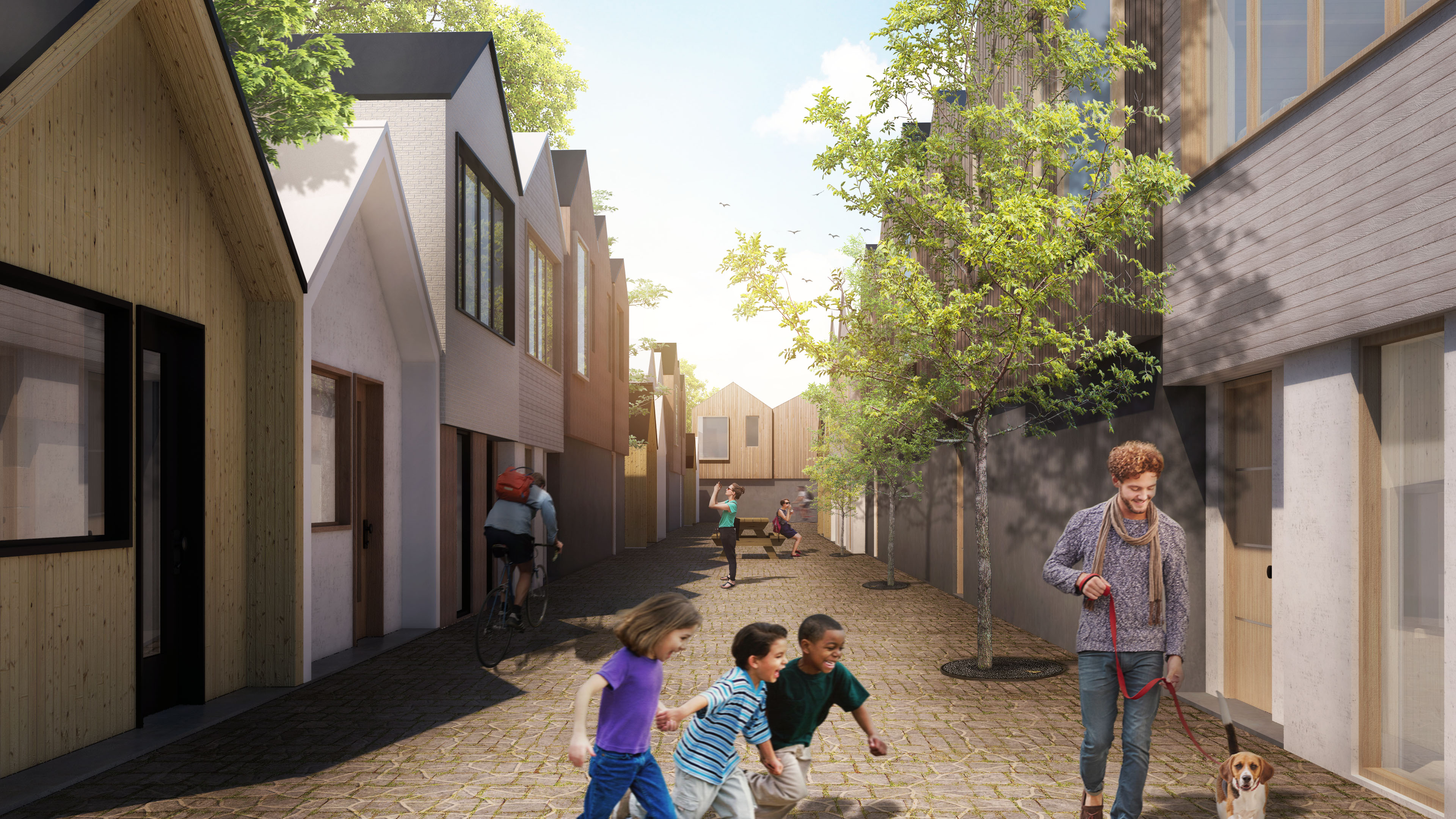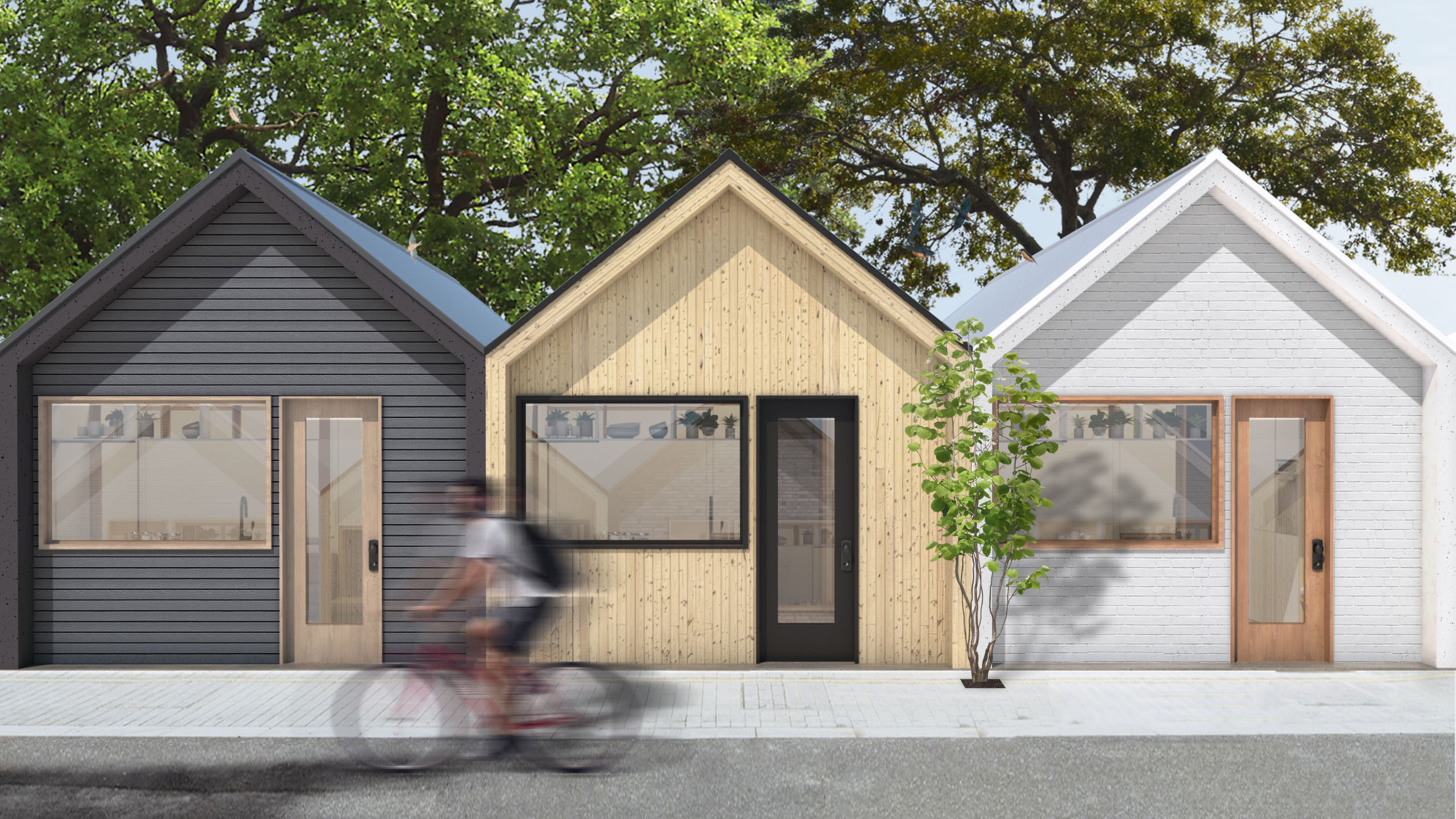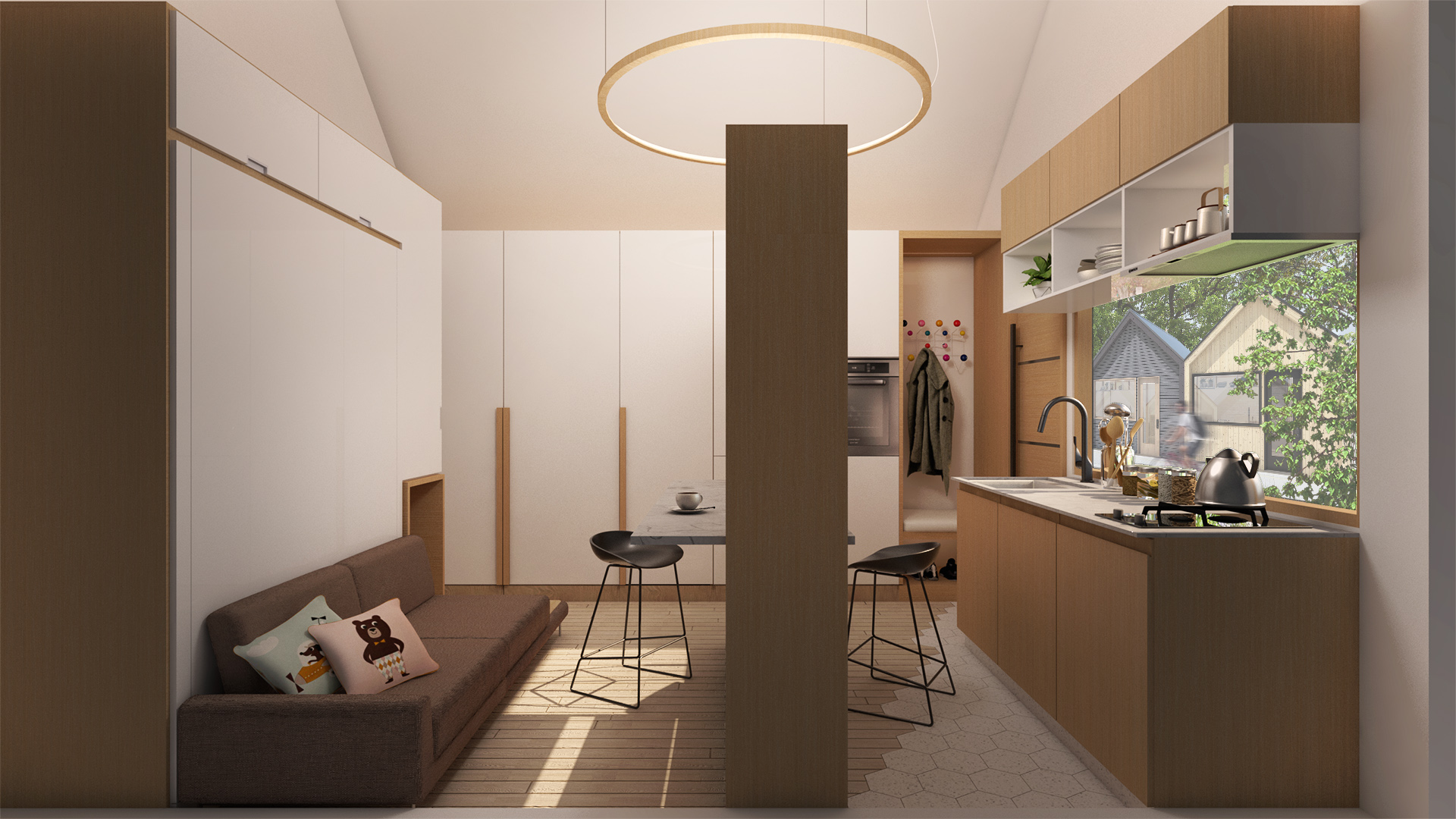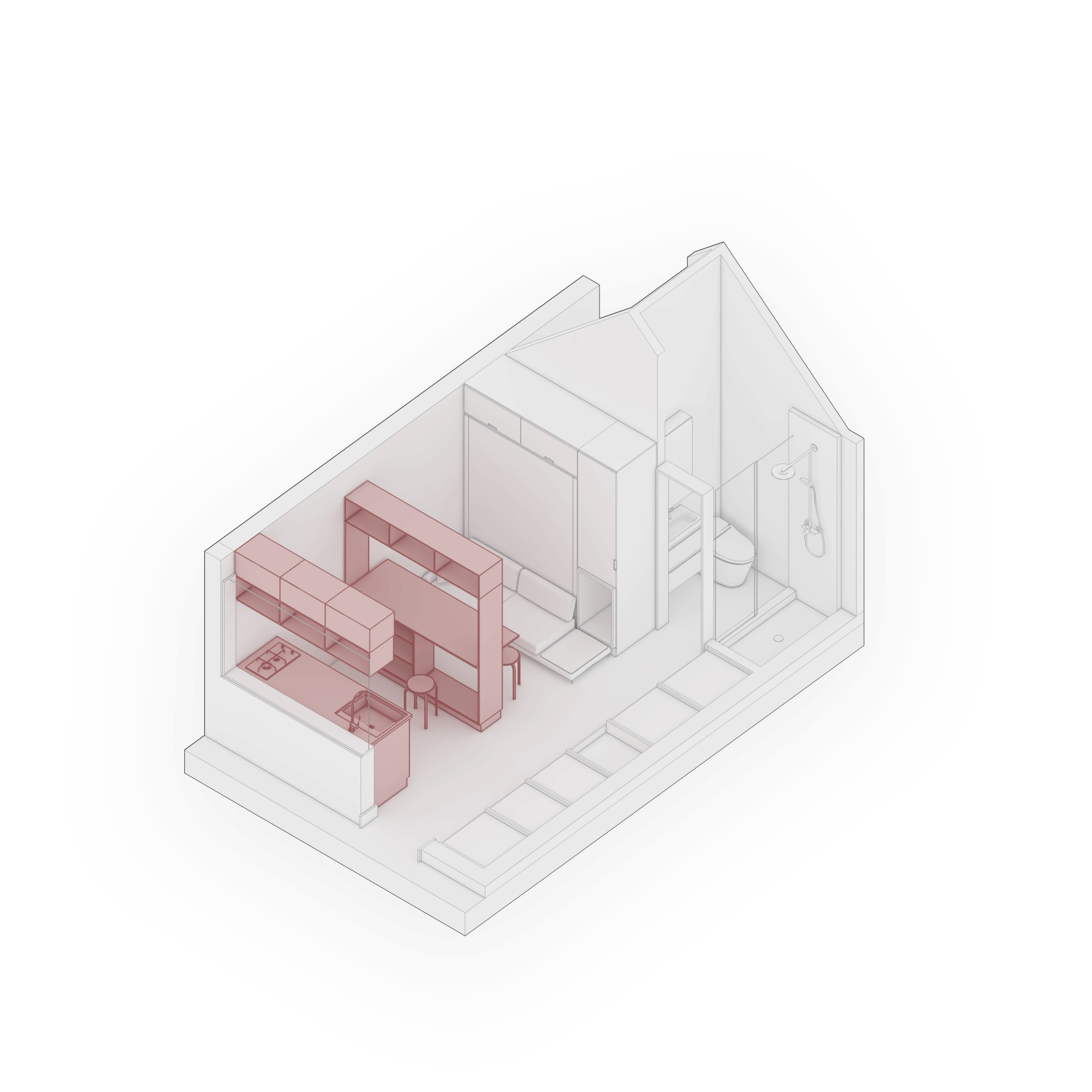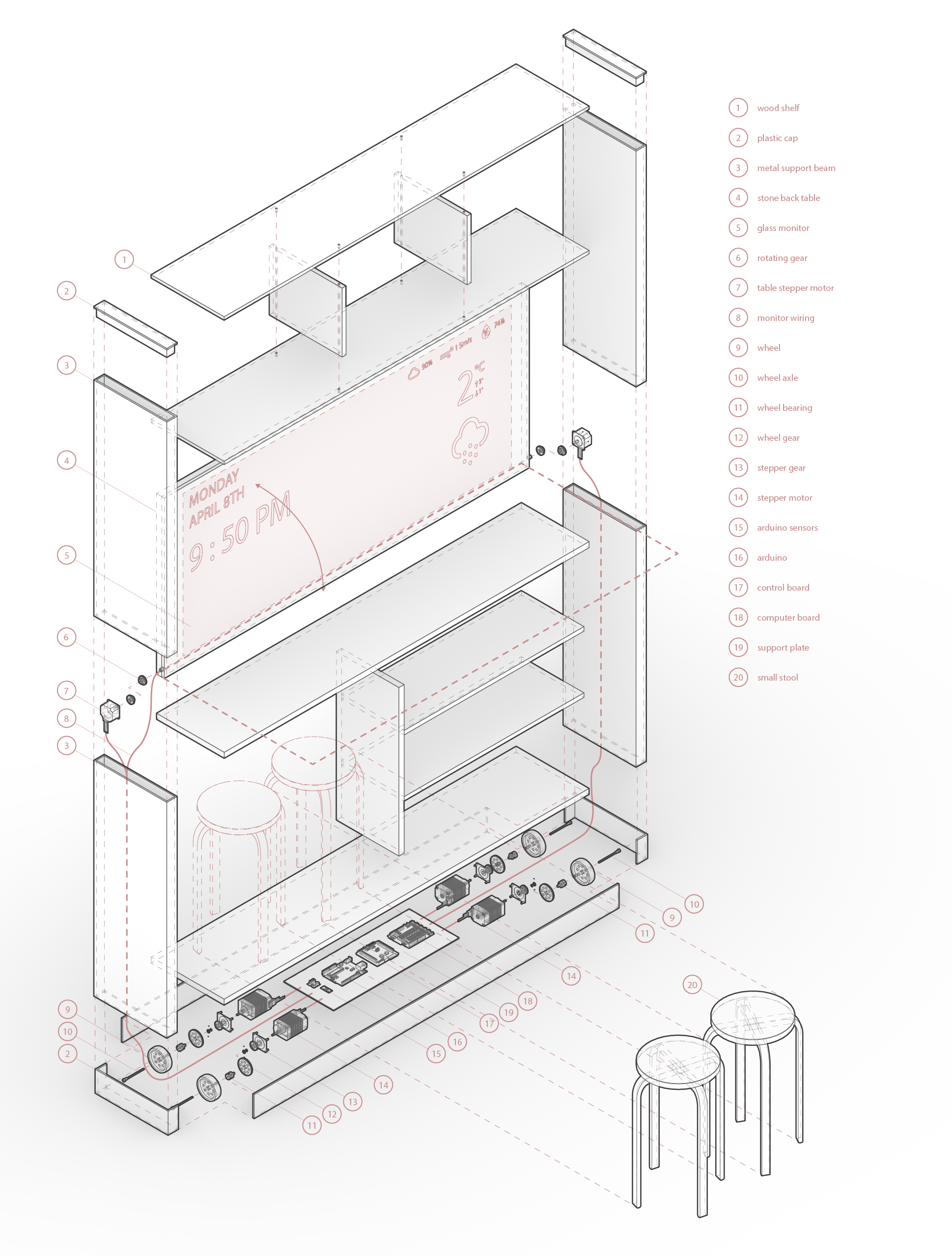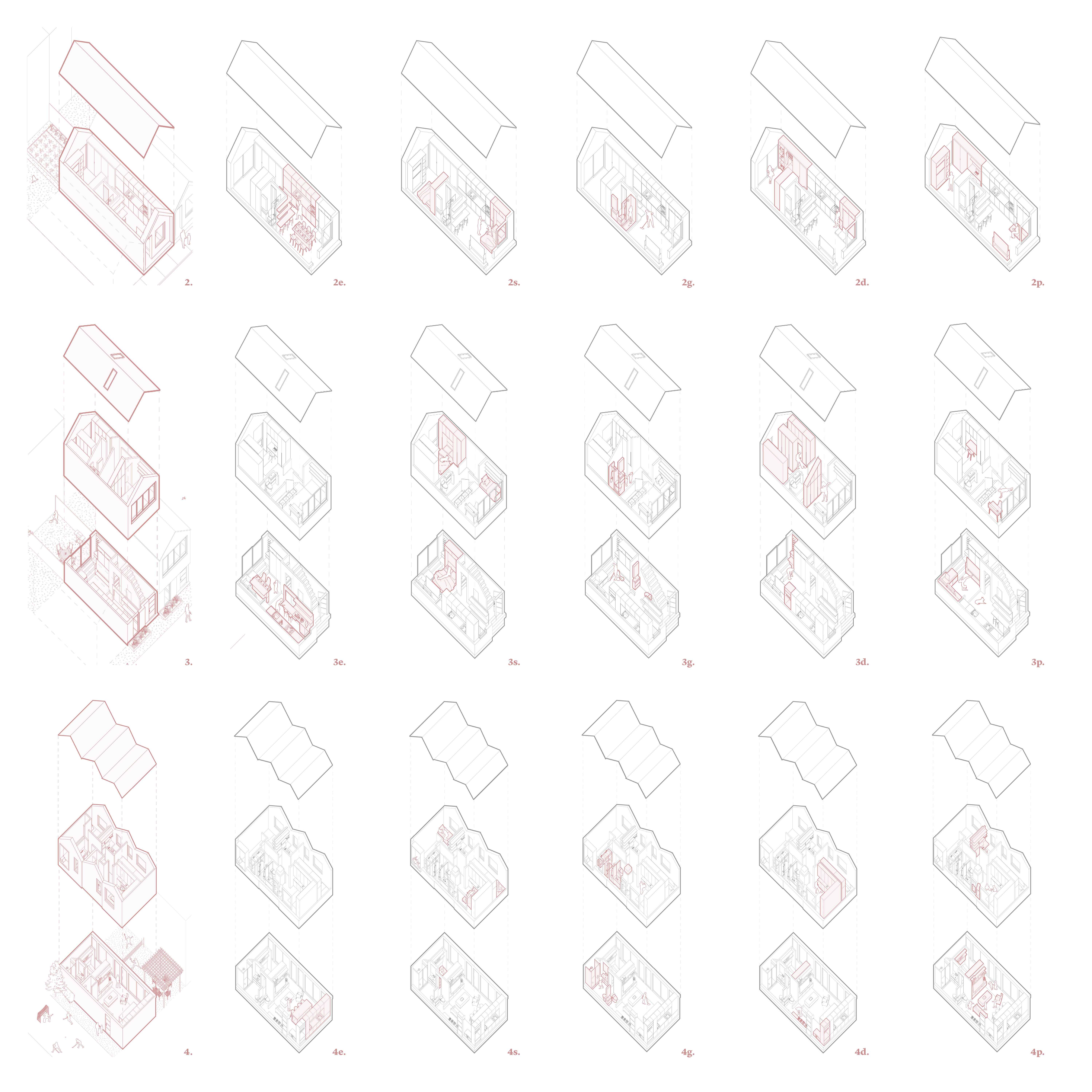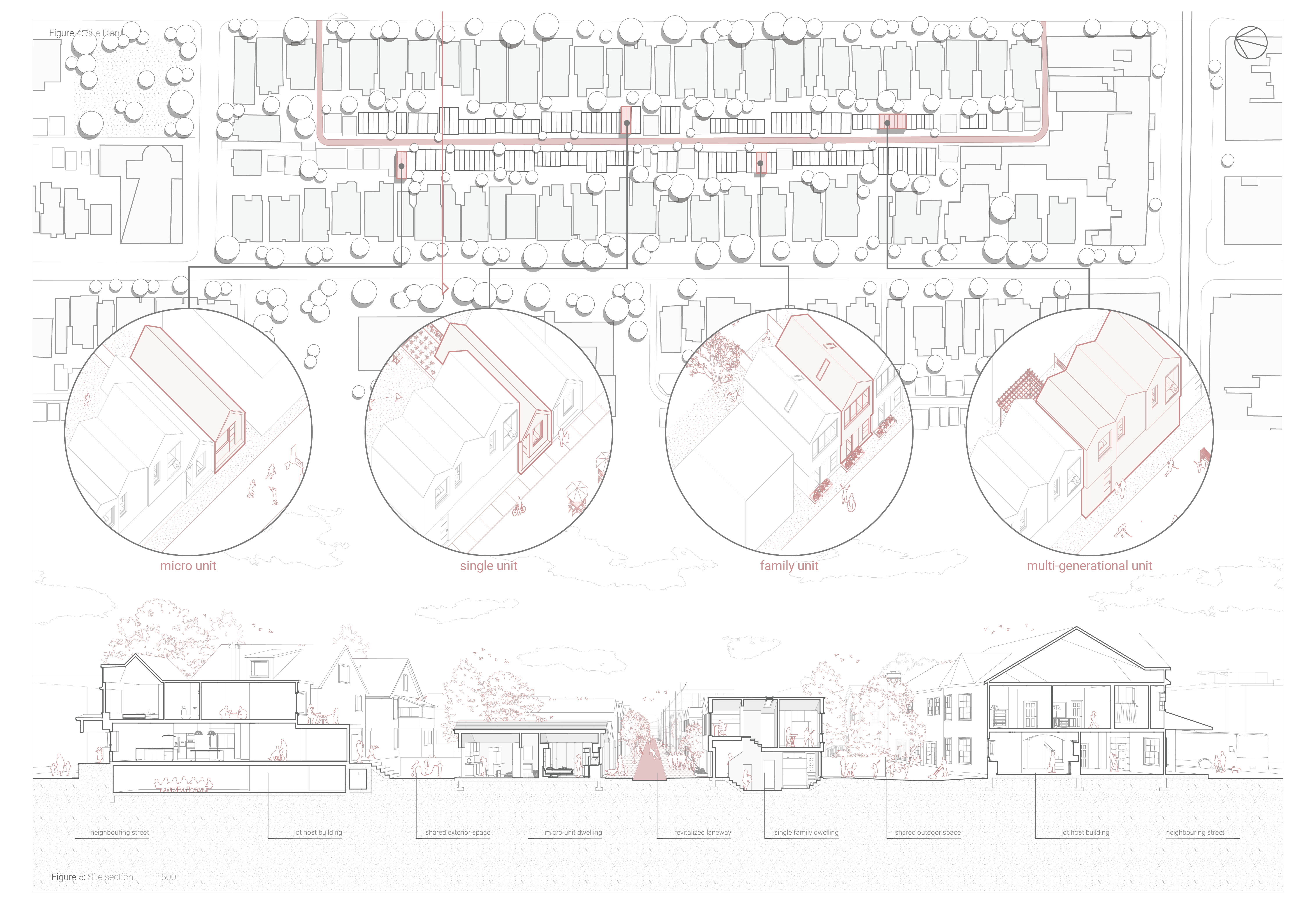A Millennial Housing Typology
The “Millennial” has become a prominent term in today’s society and culture. “Millennials” refers to a generation of young adults born between early 1980s and 2000. Made up of over 92 million people this generation is larger than the Baby Boomers, and have a huge influence on the world’s economy, social policies, culture, and urban fabric. However, Millennials have inherited a different circumstance from the previous generation, dramatically changing the social, cultural, and economic needs of the generation. Challenges such as climate change, the housing bubble, and an inflated economy, influence the possibilities of future home ownership for this generation. Additionally, the element of technology is intertwined with the day-to-day of Millennials. How might technology manifest itself within architecture of the future? And how will architecture adapt to suit the needs and desires of the upcoming generation?
Situated in the laneways of Toronto, the contemporary dwelling for millennials will begin to manifest. By defining the current dwelling spaces within existing domestic realms, we can understand their use and necessity to contemporary living. The cost per square foot within the city and the environmental impact of larger homes have led to a design that minimizes the overall floor area of the domestic realm. The living spaces must be prioritized to keep the essential elements of dwelling, based on the needs and requirements of the new generation. By using a modular floor plan similar programs can be combined to use the same floor area, while acting as two separate dwellings, as represented in intelligent spaces. Finally, to place the structure in the laneway typology, the surrounding site and landscape should be accounted for to develop a cohesive architecture.
In order to simplify the transitions between furniture and wall modules, the design designates five main types of domestic programs. These modes simplify the activities contained within a home into eat, sleep, groom, dress and play. Each mode represents the systems and activities required in our daily rituals. As inhabitants transition throughout their day, the home changes to different modes to adapt to the users’ specific needs.
To develop a truly millennial architecture, the amalgamation of technology within dwelling is imperative. The concept of technology embedded with the home is not a new one, as smart devices have become an integral part of our society and culture. However, smart home devices are being integrated as attachments to the home, rather than being designed and thought-out as part of the architecture from the beginning. To bring the concept of a technological architecture to life, a real prototype was created using collected data from arduino modules and sensors in an apartment. This data informed the design as a dynamic floor plan that responded to the specific needs of the user was developed from it.
Laurentian Architecture
Thesis Project
April 2019
2nd place recipient: 2019 Housing Competition: HERE+NOW: A House for the 21st Century

